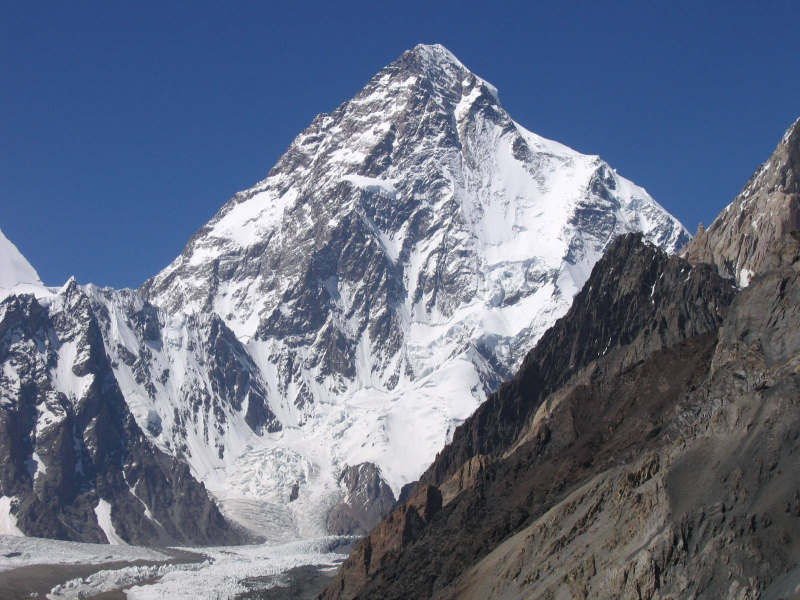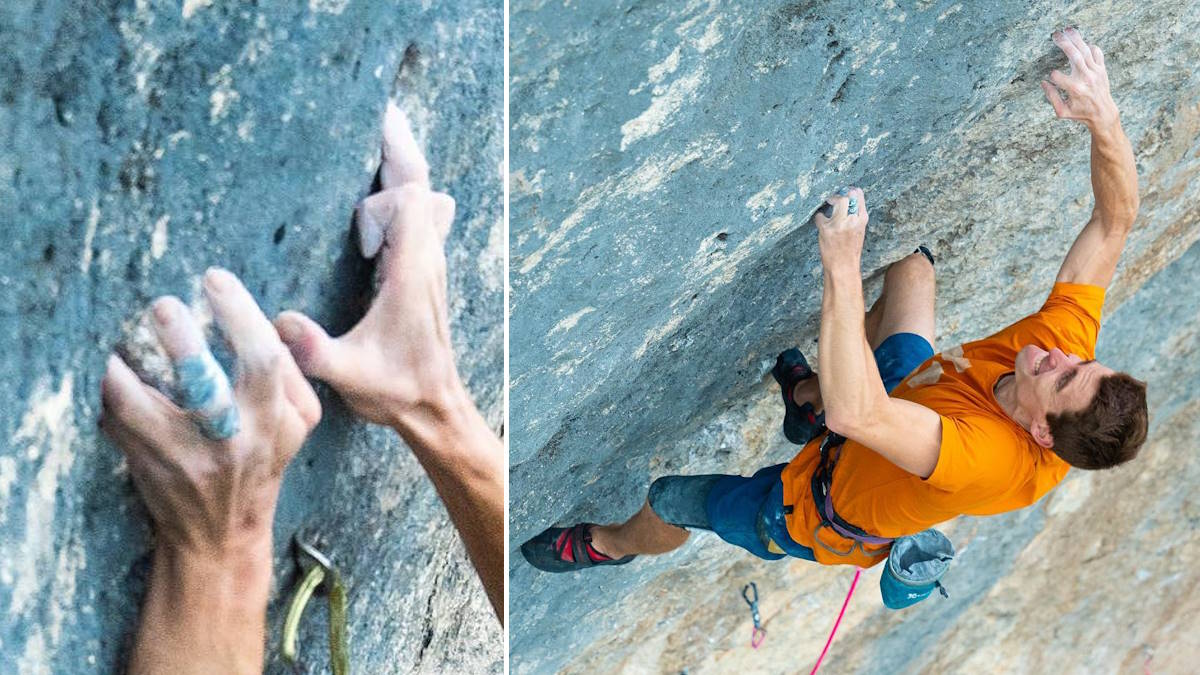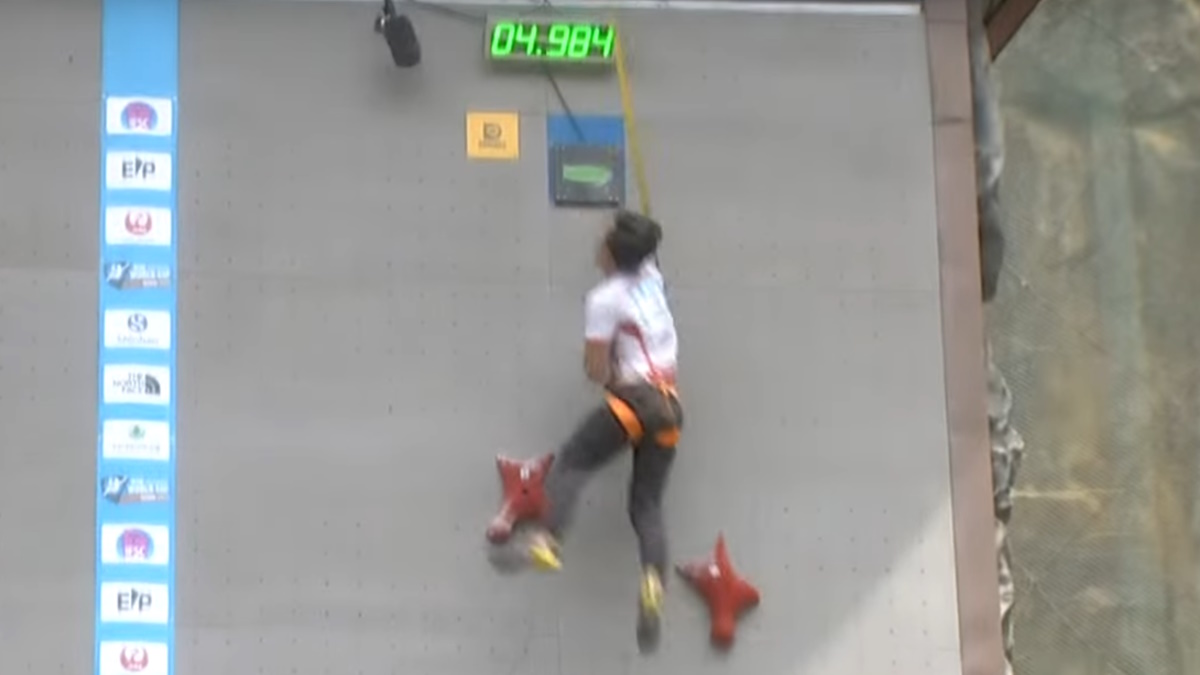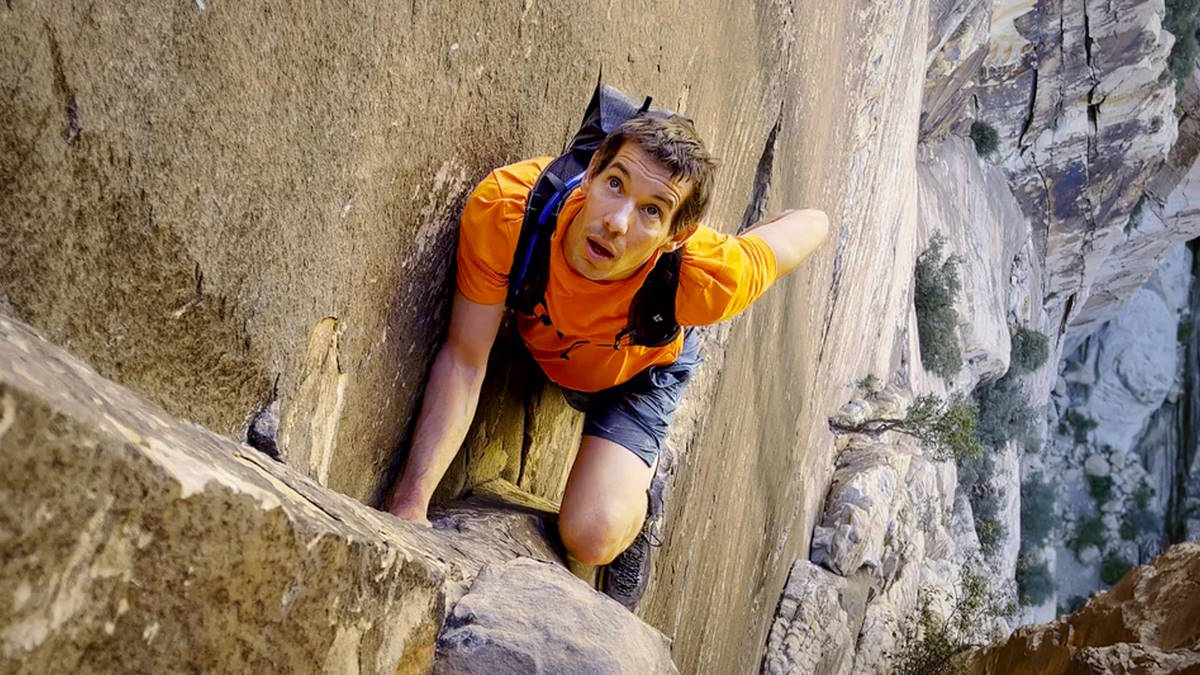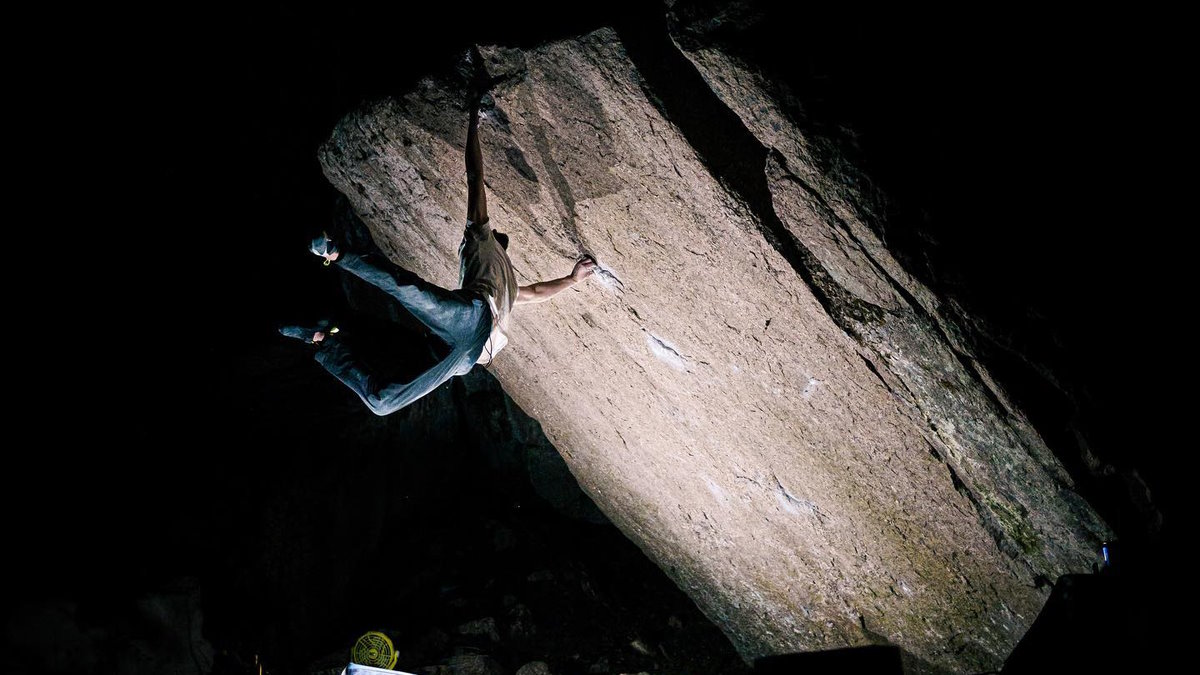An all Nepali team have made history by becoming the first people to summit K2 in winter. The grueling mountain has seen multiple failed attempts without a summit and is the last of the Eight-thousanders to be summited in winter.
The final summit team was formed by a group of 10 who waited 30 meters before the summit in order to all go to the top as one. They all summited at 16:58 local time on the 16th of January 2021. This marks the first winter summit of one of the big 14 done by a Sherpa.
The group included Mingma Gyalje Sherpa, Nirmal “Nims” Purja, Gelje Sherpa, Mingma David Sherpa, Mingma Tenzi Sherpa, Dawa Temba Sherpa, Pem Chhiri Sherpa, Kili Pemba Sherpa, Dawa Tenjing Sherpa and Sona Sherpa.
Some of the team made the summit without using supplemental oxygen – at least Nims was making the attempt without – though some of the climbers acting as support did. K2 is 8,611m meters or 28,251 feet tall and is the second highest mountain in the world.
K2 is located on the border between Pakistan and China, along the Karakoram range which is the extension of the famous Himalayas. K2 has remained the only of the “eight-thousanders” not to have been summited in Winter. Of the 14 mountains with a peak above 8,000 meters ( 26,247 feet) in height K2 isn’t the highest but has a reputation as the hardest.
This years summit attempts are basically over, with all teams having left the mountain.
Tragedy On K2
Sergi Mingote
Renowned Spanish mountaineer Sergi Mingote has died on K2. It was reported by his team that while descending somewhere in between Camp 1 and the advanced base camp he took a fall of 500 meters. A small group climbing nearby immediately went to him.
The base camp picked up the accident when they saw a sudden change in his GPS signal. The teams co-ordinated to arrange a helicopter evacuation and start him back down the mountain but unfortunately he died of his injuries shortly after.
John Snorri, Ali Sadpara, and Juan Pablo Mohr
As well as this, three climbers attempting the summit all disappeared on route on January 16th. John Snorri, Ali Sadpara, and Juan Pablo Mohr were above Camp 3 when teams below lost communication. Juan Pablo had joined the team made up of John, Ali, and Ali’s son Sajid.
Sajid at some point needed to turned back after Camp 3 as he had a problem with his oxygen regulator. After 24 hours a search set out but was pushed back by the conditions. Later search parties and helicopter reconnaissance was arranged but it has now been weeks without sight of them.
It seems like the team perished on the mountain – though we only have guesses at to what could have caused it. Sajid said he last saw them approaching the infamous bottleneck.
Atanas Skatov
When descending from Camp 3 after a big push, Atanas Skatov fell and has died. Initial reports stated there was a rope failure but the latest news is that he fell while moving between two ropes – i.e. unclipping one rope to pass an anchor and moving to clip the next rope.
His body was recovered by helicopter lower down the mountain.
Injuries
Jangbu Sherpa of the Seven Summits team was hit in a small rockfall, suffering head and eye injuries. He has been evacuated by helicopter to have his injuries treated.
K2 Winter Teams
The groups that are attempting a K2 summit in winter this year are made up of some of the most experienced and well-known mountaineers on earth. There are four teams (one more didn’t come) and over 100 people on the mountain around base camp at this time.
This is made up of climbers, Sherpas who will help on the attempts, porters helping supply lines, plus documentary/picture teams. Alan Arnette’s blog and direct contact with climbers is invaluable for much of this information.
First up is Nirmal “Nims” Purja and his team of six Sherpas. This is the main team that will attempt the summit. There is also a camera team along and a client or two that may be going up to the first camps.
Nims is famous for his military style summit of all fourteen of the eight-thousanders in six months and six days so has experience of winter summits and K2. Website
Read more – Who Is Nims Purja?
Mingma Gyalje Sherpa, Dawa Tenzing Sherpa, and Kilu Pemba Sherpa. This all Sherpa team are extremely experienced and seem one of the most likely to succeed. They have been working with other Sherpas and Nims’ team to fix ropes.
John Snorri Sigurjonsson, Muhammad Ali Sadpara and son Saji Ali Sadpara are working as an independent group. All have good mountaineering experience. They’ve been up and down from Camp 2 to acclimatize and have said they are willing to wait and not rush anything.
Seven Summits – A large team of over 50 that consists of smaller groups attempting their summits, along with clients and half made up of Sherpas. It doesn’t seem to be planned that all of them will go as one group but the logistics and equipment is essentially handled together.
Includes Sergio Moreno Mingote, Chhang Dawa Sherpa, Noel Hanna, Juan Pablo Mohr, Tamara Lunger, Alex Gavan, Mattia Conte, Antonios Sykaris, Carlos Garranzo, Bob Bhania, Peter Moerman, Colin O’Brady, Tomaz Rotar, Bernhard Lippert, J Valloton, Luis Carlos, Atanas Georgiev Skatov, Arnold Coster, Magdalena Gorzowska, and many Sherpas.
Of this team Waldemar Kowalewksi suffered an injury and was airlifted off, he is now recovering. Jon Barredo and Eva Robles also evacuated (though they weren’t intending to summit, just trek). Luis Carlos Garranzo was also airlifted from base camp after dehydration from GI problems.
Another largely independent team with a mix of climbers from Russia, Kazakhstan and Kyrgyzstan – Vassily Pivtsov, Dmitry Muravyov, Tursunaly Aubakirov, Artem Braun, Roman Abildaev, Konstantin Shepelin, and Michael Danichkin.
It doesn’t seem like this team made it to the mountain this winter.
Co-operation Is Key – The K2 Winter Plan
Initially many groups were set to work individually rather than together. Rope fixing has traditionally been something left to Sherpa guides and not the people attempting the summit. However, this year many climbers and Sherpa worked together in fixing ropes.
When weather windows allowed ropes were successfully fixed from base camp to C1, then another push to C2 with a large amount of gear and tents for the camp there. Eventually after much co-operation the lines to C3 were fixed. Further lines up to the last camp C4 and beyond were fixed by a rotating team of the Sherpas that made the final push.
Is K2 the Hardest Eight-Thousander?
At 8,611 meters K2 is the second highest mountain in the world, near Everest’s 8,848.86 meters. While Everest has a high death toll at 305 recorded deaths, it has also seen over 10,000 successful summits.
K2 has seen 85 deaths but with only around 379 summits it makes it around a 22% death rate per summit. So by percentage of people who die on the mountain, K2 is deadlier than Everest.
Most of the other big peaks don’t require a large amount of technical mountaineering experience or knowledge – just very good endurance and a top level of fitness. That isn’t to say they are easier or not full of risk.
Most of these involve a lot of climbing over snow and ice without much “rock climbing” style climbing using hands or feet on rock. Everest as an example doesn’t have many very steep sections, it’s mainly 20-30 degree sections with some up to 45-50 degrees.
However K2 has a lot more exposed rock and more “mixed” climbing. Switching between crampons, snow boots, use ice picks in ice and rock is essential for the near-vertical ice-covered rock face. Along with this comes the slog of hiking up steep snow, rock, and ice slopes. All of this added up requires deep knowledge and experience.
The Bottleneck On K2
There are also objectively hazardous sections that cannot be avoided. The most dangerous of which is the “bottleneck”, a section around 8,200 meters that forces climbers into one specific path. The only way around is a technical rock climb section far to the left which was only attempted once.
Taken alone it is a hard 50 to 60 degree steep section. The main hazard is a gigantic serac (a large ice block) looming over the route. At any point chunks of ice from pebbles to “small house size” rain down from the serac directly onto the bottleneck. Only sheer luck can save climbers if this happens.
Can K2 Be Climbed In Winter?
The vast majority of K2 attempts are done in summer, with July being the most common. It has been done without oxygen but never without a team (that used oxygen) for support and possible rescue. While Everest has been attempted and summited by relative newcomers – very few inexperienced climbers try K2.
Adrian Ballinger (the husband of Emily Harrington who free’d Golden Gate in a day in 2020) and Carla Perez joined a select few to have summited K2 without Oxygen in 2019. He said he would never go back in any circumstance. Watch their experience here.
Five strong teams have attempted K2 in winter but all were pushed back by the extreme weather and cold. It has been known to hit -50° Celsius (-58° Fahrenheit) with wind speeds up to 80 mph at the peak.
The high winds actually make it feel colder by pulling away any warm air on the body. This wind chill is one of the defining difficulties of K2 in winter.
Altogether, K2 is unrelenting. It basically requires the perfect team with the highest level of experience, plus the perfect conditions without any accidents. Weather changes wildly which can cause avalanches, blizzards, and loose rock to tumble down on climbers. Rock & Ice summed up exactly what is needed for a winter summit to happen.
Nanga Parbat – Second To Last Eight-Thousander Climbed in Winter
The last big peak to be climbed in winter was Nanga Parbat in 2016. It had been attempted by over 30 teams since 1988 but every one until then had been turned back by weather, sheer cold, or injuries and accidents. In 2016 a few members of different expeditions joined forces and Simone Moro, Basque Alex Txikon, and Ali Sadpara made the summit and back alive.
However, at 8,126 meters it’s nearly half a vertical kilometer less than K2. Five strong teams have attempted K2 in winter but all were pushed back by the extreme weather and cold. It has been known to hit -50° Celsius (-58° Fahrenheit) with wind speed up to 80 mph at the peak.
More Mountaineering – How Many Dead Bodies Are On Everest?
